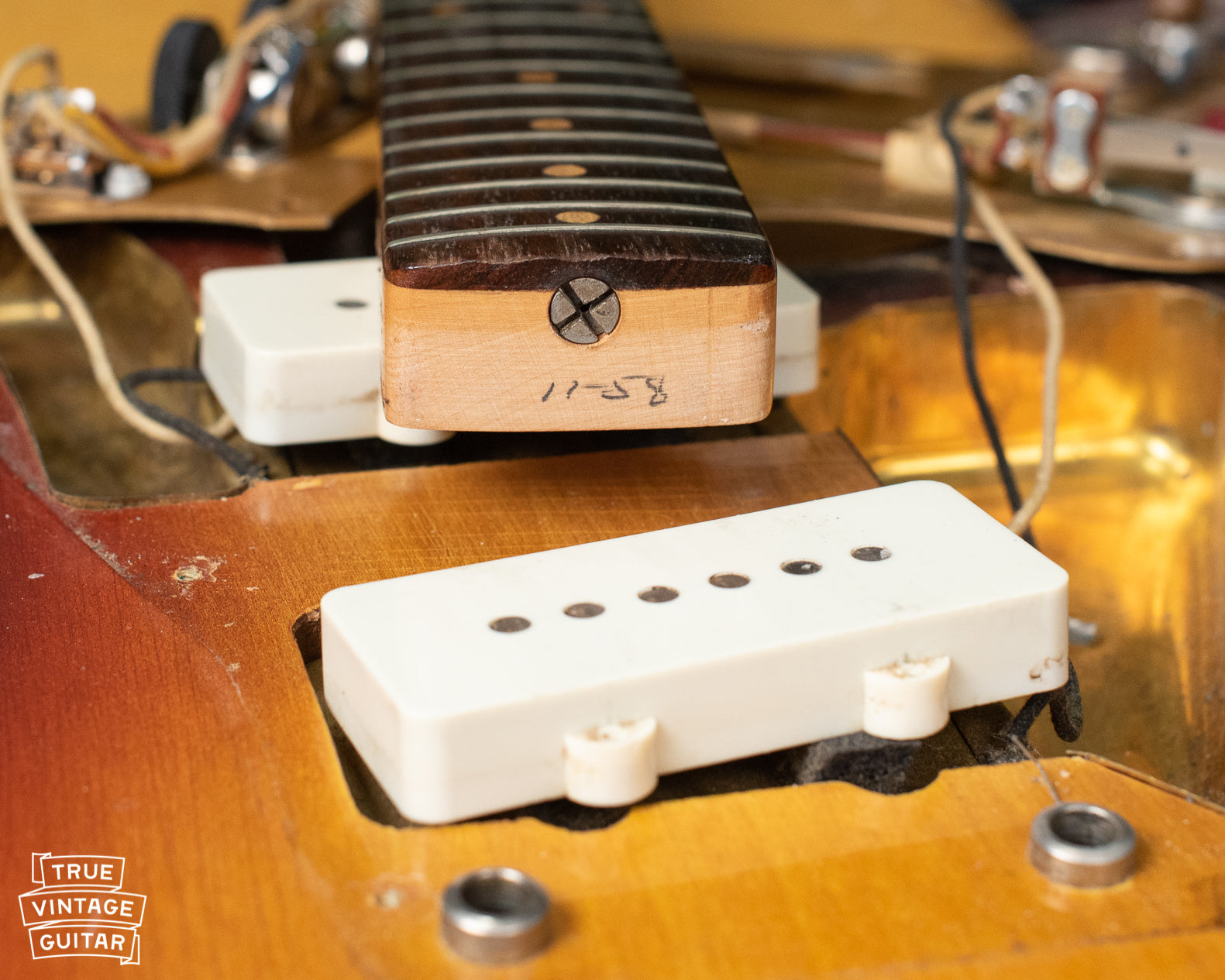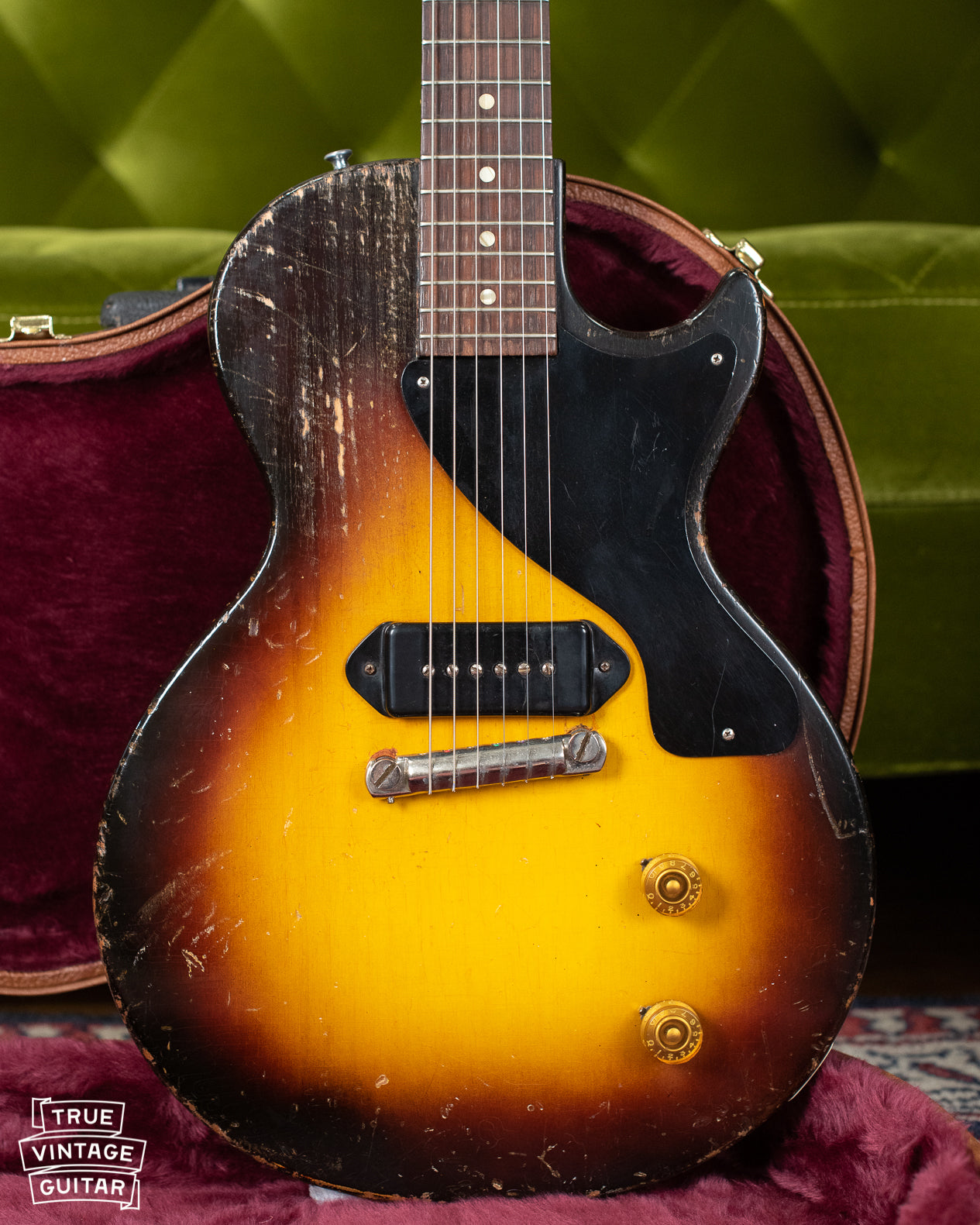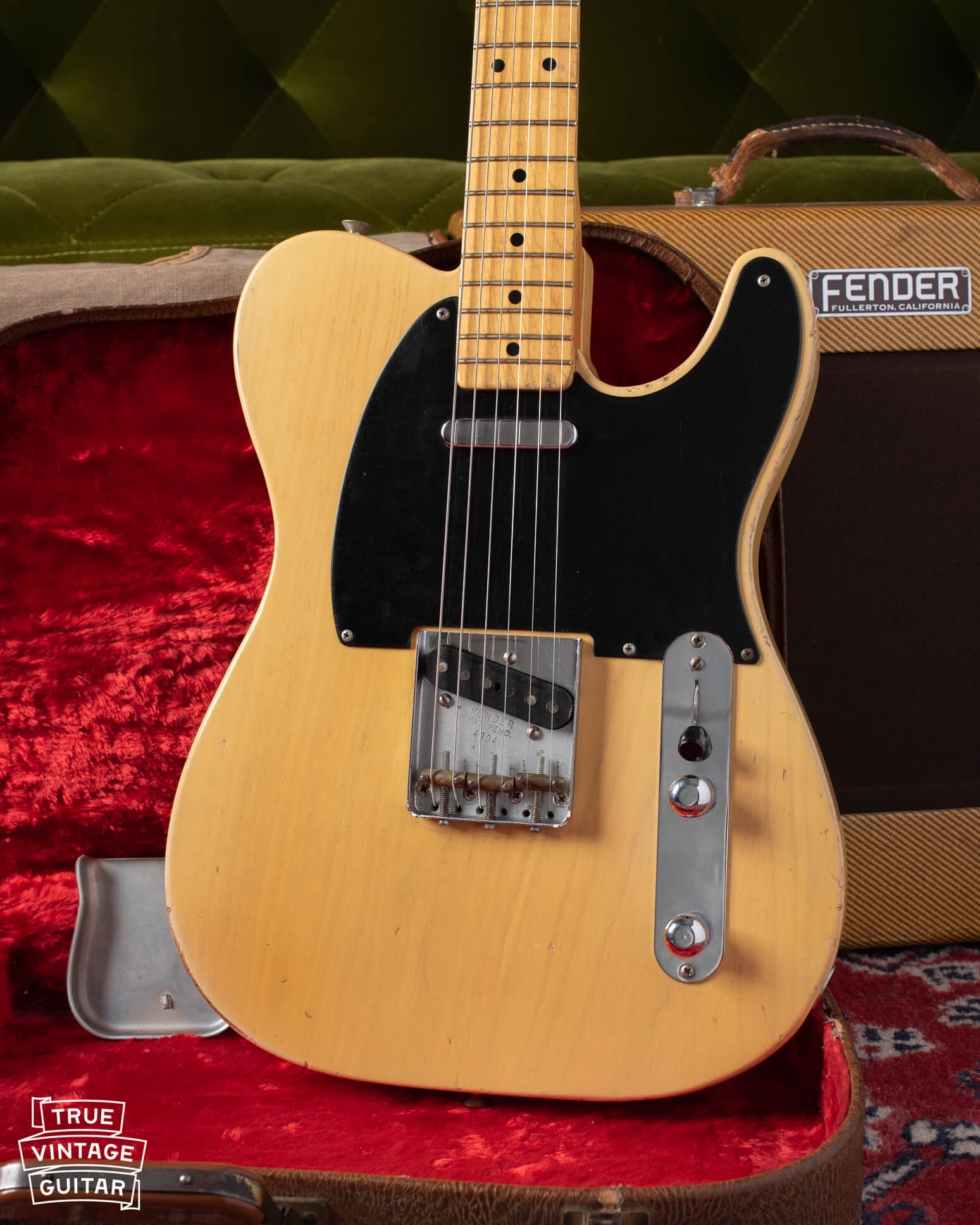This vintage 1958 Fender Jazzmaster is likely the best Jazzmaster I've ever played. I was thrilled to be the buyer for this guitar from the family of its original owner. I'm always looking to buy nice examples of Fender Jazzmasters, but I'm especially looking for Fender guitars from the 1950s, 1960s, and 1970s. You can contact me here to sell a Fender guitar.
It's important to accurately date a vintage guitar to establish its originality and value. The serial number is on the first place to start, but the interior features are often more important. You can check out this article for help with Fender guitar dating: How to date a Fender Jazzmaster.
Apart from the serial number, there are two pencil build dates that aren't visible from the outside of a 1950s or early 1960s Fender Jazzmaster. The neck heel of this guitar bears the pencil date "11/58" as it was made in November of 1958. The bridge pickup cavity also bears the date "11/58". It's not always a given that these two dates will match on vintage Fender guitars. It's pretty common for one to predate the other by a few months.

The next place I would go to check for authenticity of a vintage Fender Jazzmaster would be its potentiometer codes. The date code on a potentiometer is assigned with the pot was made at the manufacturer, not necessarily when it was installed in a guitar. We can usually expect a code to predate manufacture by anywhere from a month to a few years. The volume potentiometer on this 1958 Fender Jazzmaster is "304 641" where 304 = Stackpole (manufacturer), 6 = 1956, and 41 = the 41st week of that year. This predates the guitar by almost 2 years! It's not as uncommon as it may seem. For more help with dating potentiometers, check out How to date Fender guitars with potentiometer codes.

The next place that I find interesting about verifying the authenticity of a vintage guitar is the finish. An original finish on a vintage guitar is very important to its value. Fender guitars were very commonly refinished in the 1970s and 1980s so many of them no longer have their original finish.
I look for three main important tells on a vintage Fender after assessing its overall look for authenticity compared to the other original finishes I've seen: the neck pocket, the nail holes, and the edges of the body cavities. The neck pocket styles changed throughout the years, but in 1958 they should be painted very similarly to the rest of the guitar with a light shade of the sunburst visible. There shouldn't be a shadow from the paint stick until guitars made after 1962.
Small nails or brads were nailed into the Fender guitar bodies during this time period and were used to support the body of the guitar while the finish was curing. There should be 4 nail holes in the top of the body on a 1958 Jazzmaster. Here's what the neck pocket and the two upper nail holes look like. The second hole from the left and the second hole from the right are nail holes, not pickguard screw mounting holes. The nail holes should not have paint in them.

The second set of nail holes are near the bottom of the body. This picture shows the vibrato cavity and control cavity on the Jazzmaster. The vibrato has 6 screw mounting holes and one nail next to the middle screw hole on the bass side of the guitar. The other nail hole is located right next to the bottom most pickguard screw hole on the treble side of the guitar. Neither of these holes should have paint in them.




